|
|

|
|
Author
|
Topic: NASA seeks deep space habitat prototypes
|
Robert Pearlman
Editor Posts: 50516
From: Houston, TX
Registered: Nov 1999
|
 posted 04-21-2016 10:12 AM
posted 04-21-2016 10:12 AM
   
NASA release NASA Seeks Proposals for Deep Space Habitation PrototypesNASA is soliciting proposals for the development of prototypes for deep space habitats that will give astronauts a place to call home during long-duration missions supporting the agency's Journey to Mars. The solicitation, Next Space Technologies for Exploration Partnerships-2 (NextSTEP-2), is a follow-on to the NextSTEP Broad Agency Announcement (BAA) released in October 2014 and requesting industry proposals for concept studies and technology development projects in the areas of habitation, advanced propulsion and small satellites. NASA's Orion crew spacecraft and Space Launch System are the agency's first major components for establishing a human presence in deep space. With these transportation systems progressing toward their maiden flight in 2018, NASA now is looking toward investments in deep space habitation — the next major component of human space exploration beyond low-Earth orbit. NextSTEP is a public-private partnership model that seeks commercial development of deep space exploration capabilities to support more extensive human spaceflight missions in the proving ground of space around the moon, known as cislunar space, and to enable transit to Mars. This partnership model enables NASA to obtain innovative concepts and support private industry commercialization plans for low-Earth orbit. "NASA is increasingly embracing public-private partnerships to expand capabilities, and opportunities in space," said Jason Crusan, director of NASA's Advanced Exploration Systems (AES) Division, which sponsors NextSTEP. "Our NextSTEP partners commit their own corporate resources toward the development — making them a true partner in the spaceflight economy." Under Appendix A of the NextSTEP-2 Ominbus BAA, the agency is providing the opportunity for additional contractors to join those already under contract through the previous NextSTEP BAA. Proposals will include plans for an evolvable approach to long-duration deep space habitation and the development of full-size, ground prototype habitat units no later than 2018. Eligible applicants from U.S. companies, universities, and non-profit organizations must submit proposals electronically by 5 p.m. EDT June 15. Notices of intent should be provided by 5 p.m. May 13. Proposers will have a chance to ask questions about this particular solicitation during an industry forum on Monday, April 25. Additional inquiries must be submitted in writing by Monday, May 2 as directed in the solicitation. NextSTEP is an example of NASA's increased commitment to partnering with industry to stimulate the growth of commercial industry in space while enabling NASA's human exploration mission. NASA's Advanced Exploration Systems Division pioneers innovative approaches to rapidly and affordably develop prototype systems for future human exploration missions. |
Robert Pearlman
Editor Posts: 50516
From: Houston, TX
Registered: Nov 1999
|
 posted 08-09-2016 05:10 PM
posted 08-09-2016 05:10 PM
   
NASA release NASA Selects Six Companies to Develop Prototypes, Concepts for Deep Space HabitatsNASA has selected six U.S. companies to help advance the Journey to Mars by developing ground prototypes and concepts for deep space habitats. 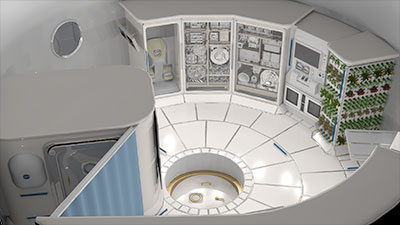 Through the public-private partnerships enabled by the Next Space Technologies for Exploration Partnerships-2 (NextSTEP-2) Broad Agency Announcement, Appendix A, NASA and industry partners will expand commercial development of space in low-Earth orbit while also improving deep space exploration capabilities to support more extensive human spaceflight missions. The selected companies are: - Bigelow Aerospace of Las Vegas
- Boeing of Pasadena, Texas
- Lockheed Martin of Denver
- Orbital ATK of Dulles, Virginia
- Sierra Nevada Corp.'s Space Systems of Louisville, Colorado
- NanoRacks of Webster, Texas
Habitation systems provide a safe place for humans to live as we move beyond Earth on our Journey to Mars. "NASA is on an ambitious expansion of human spaceflight, including the Journey to Mars, and we're utilizing the innovation, skill and knowledge of the both the government and private sectors," said Jason Crusan, director of NASA's Advanced Exploration Systems. "The next human exploration capabilities needed beyond the Space Launch System (SLS) rocket and Orion capsule are deep space, long duration habitation and in-space propulsion. We are now adding focus and specifics on the deep space habitats where humans will live and work independently for months or years at a time, without cargo supply deliveries from Earth." The six partners will have up to approximately 24 months to develop ground prototypes and/or conduct concept studies for deep space habitats. The contract award amounts are dependent on contract negotiations, and NASA has estimated the combined total of all the awards, covering work in 2016 and 2017, will be approximately $65 million, with additional efforts and funding continuing into 2018. Selected partners are required to contribute at least 30 percent of the cost of the overall proposed effort. The ground prototypes will be used for three primary purposes: supporting integrated systems testing, human factors and operations testing, and to help define overall system functionality. These are important activities as they help define the design standards, common interfaces, and requirements while reducing risks for the final flight systems that will come after this phase. NASA made the first NextSTEP selections in 2015, which include deep space habitation concept studies that also advance low-Earth orbit commercial capabilities. Four companies were selected under that solicitation: Bigelow Aerospace LLC, Boeing, Lockheed Martin and Orbital ATK. This round of NextSTEP selections are part of a phased approach that will catalyze commercial investment in low-Earth orbit and lead to an operational deep space habitation capability for missions in the area of space near the moon, which will serve as the proving ground for Mars during the 2020s. These missions will demonstrate human, robotic and spacecraft operations in a true deep space environment that's still relatively close to Earth and validate technologies for the longer journey to Mars. The activities of these NextSTEP awards will inform the acquisition and deployment approach for the next phase of flight systems for deep space including important aspects, such as standards and interfaces, module configurations, and options for deployment using SLS and Orion and commercial vehicles. In addition to U.S. industry, NASA is in discussions on collaborative opportunities with our international partners to enable fully operational deep space habitation capability. NextSTEP is managed by the Advanced Exploration Systems Division (AES) in NASA's Human Exploration and Operations Mission Directorate. AES is pioneering innovative approaches and public-private partnerships to rapidly develop prototype systems, advance key capabilities, and validate operational concepts for future human missions beyond Earth orbit. |
Robert Pearlman
Editor Posts: 50516
From: Houston, TX
Registered: Nov 1999
|
 posted 08-09-2016 05:11 PM
posted 08-09-2016 05:11 PM
   
The six selected partners are: - Bigelow Aerospace LLC of North Las Vegas, Nevada will develop and test a prototype of XBASE (Expandable Bigelow Advanced Station Enhancement), a 330 cubic meter expandable habitat and test platform for deep space hardware. The testing conducted on this platform will advance approaches for deep space missions and serve as a basis for commercialization in low-Earth orbit. XBASE is based on the B-330 expandable spacecraft for the mission-specific purpose of attaching to the International Space Station as a visiting vehicle. XBASE leverages the lessons learned from the Bigelow Expandable Activity Module (BEAM), a 16 cubic meter expandable spacecraft, which was recently deployed on the space station.
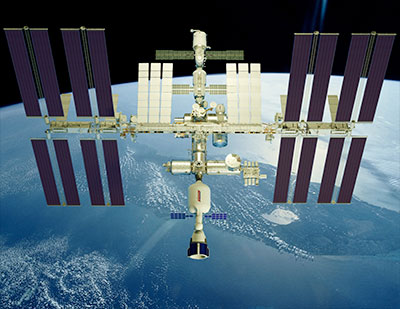 - Boeing of Houston is developing a modular habitat system that leverages experience in designing, developing, assembling on-orbit, and safely operating the International Space Station for over 15 years. This includes the production of a full-scale habitat that will provide design analysis and high-fidelity demonstration and test capability to simulate how humans can safely live and work in deep space for extended periods of time. This ground demonstrator will test and validate interface standards, systems functionality and critical exploration technologies.
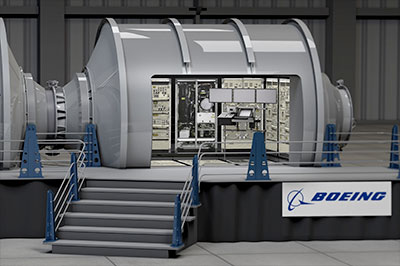 - Lockheed Martin of Denver, Colorado will refurbish a multi-purpose logistics module, like those that were used to carry equipment and supplies to and from the station aboard the space shuttle, into a full-scale habitat prototype that will include integrated avionics and ECLSS. The high-fidelity ECLSS prototype will provide risk reduction and form and fit testing. The avionics prototype will prove data communication between the habitat and Orion and demonstrate crew interfaces between a deep space habitat and Orion. Lockheed Martin will also use virtual prototyping to validate the habitat module’s form, fit and function.
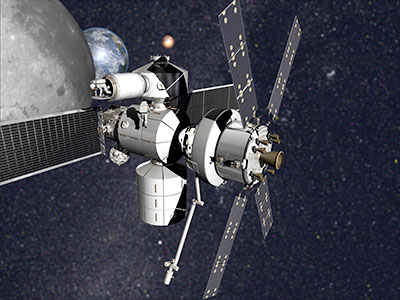
|
Robert Pearlman
Editor Posts: 50516
From: Houston, TX
Registered: Nov 1999
|
 posted 08-09-2016 05:11 PM
posted 08-09-2016 05:11 PM
   
- Orbital ATK of Dulles, Virginia will mature the mission architecture and design of their initial cislunar habitat concept, based on the Cygnus spacecraft that currently services the space station. Orbital ATK will create their prototype to support testing of critical interfaces with Orion and other modules. They will mature the Cygnus-derived habitat design for long-term operation in deep space and establish a proposed roadmap that leads to Mars exploration.
 - Sierra Nevada Corporation’s Space Systems of Louisville, Colorado will study and refine a flexible architecture and concept of operations for a deep space habitat that leverages three to four commercial launches to construct a modular long-duration habitat. Their prototype will be based on the Dream Chaser cargo module as a foundation for the SNC NextSTEP-2 proposal and will allow SNC to assess their ability to meet the criteria for each operation phase and identify risks. After launch from the Dream Chaser spacecraft, the SNC NextSTEP-2 module will be combined with a large inflatable fabric environment module, ECLSS system, and propulsion system. The design and prototype will confirm the proof-of-concept and ensure critical subsystems seamlessly integrate together.
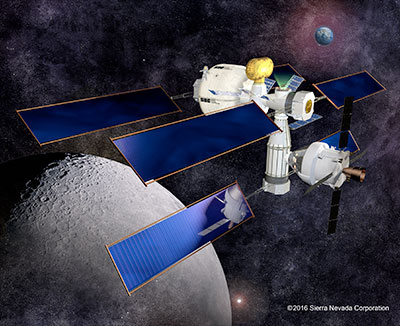 - NanoRacks of Webster, Texas in conjunction with its partners, Space Systems Loral and the United Launch Alliance, referred to collectively as the Ixion Team, will conduct a comprehensive feasibility study regarding the conversion of an existing launch vehicle’s upper stage, or propellant segment, into a pressurized habitable volume in space. The feasibility study will provide insight into this innovative and low-cost approach that can be used for any rocket system, including SLS.
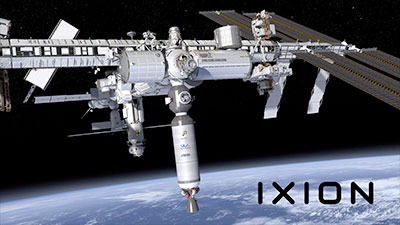
|
Robert Pearlman
Editor Posts: 50516
From: Houston, TX
Registered: Nov 1999
|
 posted 04-08-2019 03:23 PM
posted 04-08-2019 03:23 PM
   
NASA release NASA Selects Two New Space Tech Research Institutes for Smart HabitatsAs exploration missions venture beyond low-Earth orbit and to the Moon — and eventually Mars — NASA must consider automated technologies to keep habitats operational even when they are not occupied by astronauts. To help achieve this, NASA has selected two new Space Technology Research Institutes (STRIs) to advance space habitat designs using resilient and autonomous systems. The selected proposals create two multi-disciplinary, university-led research institutes to develop technologies critical to a sustainable human presence on the Moon and Mars. The smart habitat, or SmartHab, research will complement other NASA projects to help mature the mission architecture needed to meet challenging exploration goals. "Partnering with universities lets us tap into new expertise, foster innovative ideas, as well as expand the research and development talent base for both aerospace and broader applications," said Jim Reuter, acting associate administrator of NASA's Space Technology Mission Directorate. "We're excited to work with these two new STRIs to develop smart habitat technologies for exploration missions on the Moon and Mars." Each STRI will receive as much as $15 million over a five-year period. The selected institutes are: Habitats Optimized for Missions of Exploration (HOME) The HOME institute's design approach for deep space habitats is one that relies not only on proven engineering and risk analysis, but also on emergent technologies to enable resilient, autonomous and self-maintained habitats for human explorers. The institute seeks to advance early-stage technologies related to autonomous systems, human and automation teaming, data science, machine learning, robotic maintenance, onboard manufacturing, and more. The HOME team is led by Stephen Robinson, principal investigator at the University of California, Davis, in partnership with the University of Colorado Boulder, Carnegie Mellon University, the Georgia Institute of Technology, Howard University, Texas A&M University and the University of Southern California. Industry collaborators include Sierra Nevada Corporation, Blue Origin and United Technology Aerospace Systems. Resilient ExtraTerrestrial Habitats institute (RETHi) RETHi seeks to design and operate resilient deep space habitats that can adapt, absorb and rapidly recover from expected and unexpected disruptions. The institute plans to leverage expertise in civil infrastructure with advanced technology fields such as modular and autonomous robotics and hybrid simulation. Through an integrated effort, RETHi will mature deep space habitats that can operate in both crewed and uncrewed configurations. The institute plans to create a cyber-physical prototype testbed of physical and virtual models to develop, deploy and validate different capabilities. The multidisciplinary team is led by Purdue University principal investigator Shirley Dyke, in partnership with University of Connecticut, Harvard University and the University of Texas at San Antonio. The new selections will join two institutes founded by NASA in 2017. The established STRIs have advanced biological engineering and cutting-edge methods for developing carbon nanotube-based, ultra-strong and lightweight aerospace structural material. The two inaugural institutes are the Center for the Utilization of Biological Engineering in Space (CUBES) and the Ultra-Strong Composites by Computational Design (US-COMP). Both of these undertakings are harnessing a talent base of inventiveness and innovation to help shape NASA's pursuit of Earth-independent, self-sustaining exploration mission capabilities. These selections are funded by NASA's Space Technology Mission Directorate (STMD), which is responsible for developing the cross-cutting, pioneering, new technologies and capabilities needed by the agency to achieve its current and future missions. |
Robert Pearlman
Editor Posts: 50516
From: Houston, TX
Registered: Nov 1999
|
 posted 07-24-2019 08:09 AM
posted 07-24-2019 08:09 AM
   
NASA has quietly decided to give Northrop Grumman a contract to build a "minimal" habitation module for its lunar Gateway after concluding it was the only company that could meet NASA's schedule, reports SpaceNews. The agency made the determination in a low-key Justification for Other Than Full and Open Competition document published late July 19 on a procurement website, linked a special notice issued May 30 that stated that NASA intended to use an existing Next Space Technologies for Exploration Partnerships 2 (NextSTEP-2) program to procure the habitation module...In the July 19 justification, NASA said it concluded Northrop Grumman was the only company that could provide a "minimal habitation module" on the agency's desired schedule. "NGIS was the only NextSTEP-2 contractor with a module design and the production and tooling resources capable of meeting the 2024 deadline," the document stated. NASA reached that conclusion, it stated, based on three factors. One is that Northrop's proposed habitation module is based on its Cygnus cargo spacecraft, which is in active production. The second was that the company had made sufficient progress on major changes to the Cygnus needed for use as a habitation module, including the addition of radial docking ports and body-mounted radiators. A final factor is that the small size of the module enables it to be launched on commercial launch vehicles with existing payload fairings. | |
Contact Us | The Source for Space History & Artifacts
Copyright 2023 collectSPACE.com All rights reserved.

Ultimate Bulletin Board 5.47a
|
|

|
 advertisement advertisement

|


















